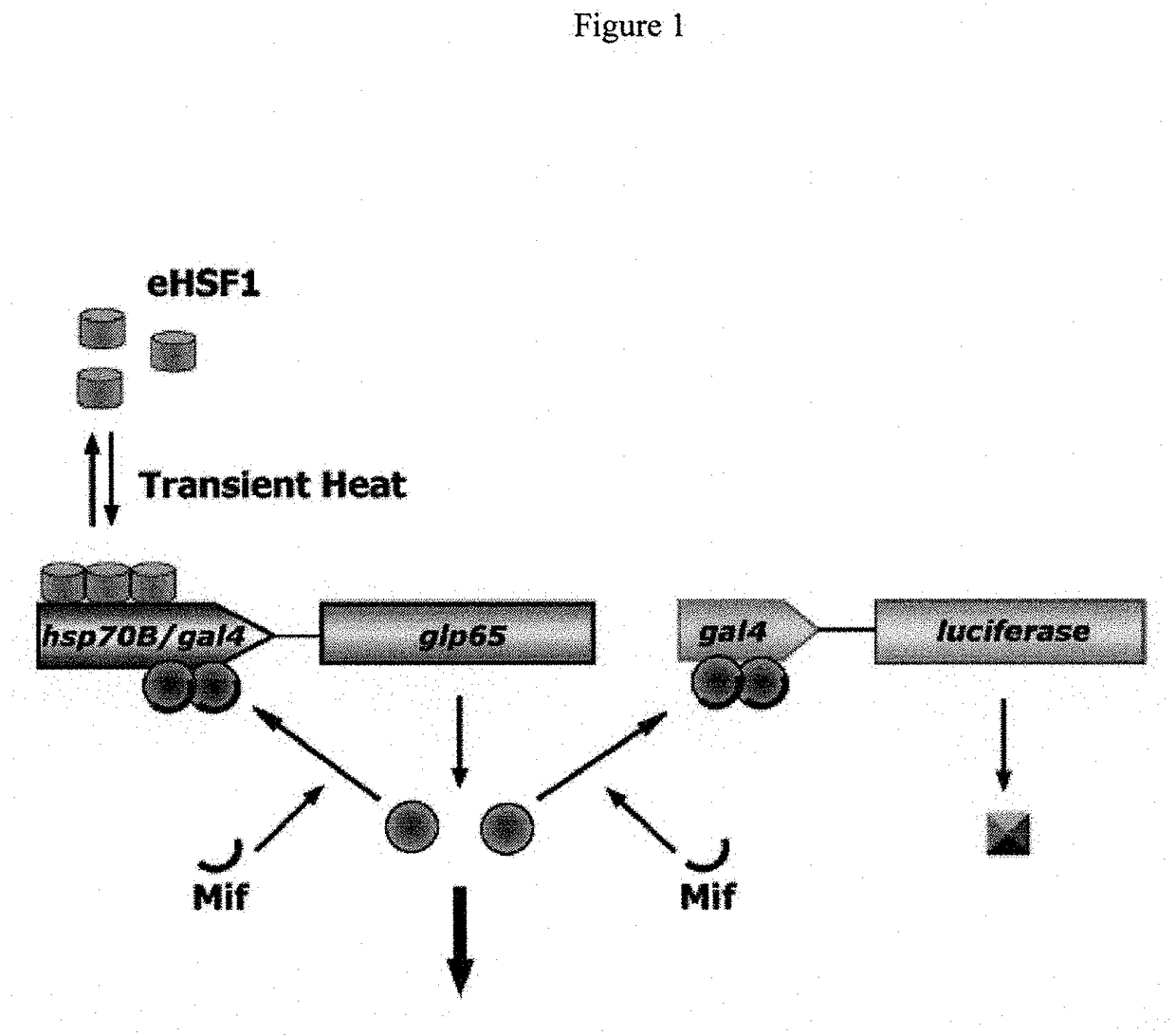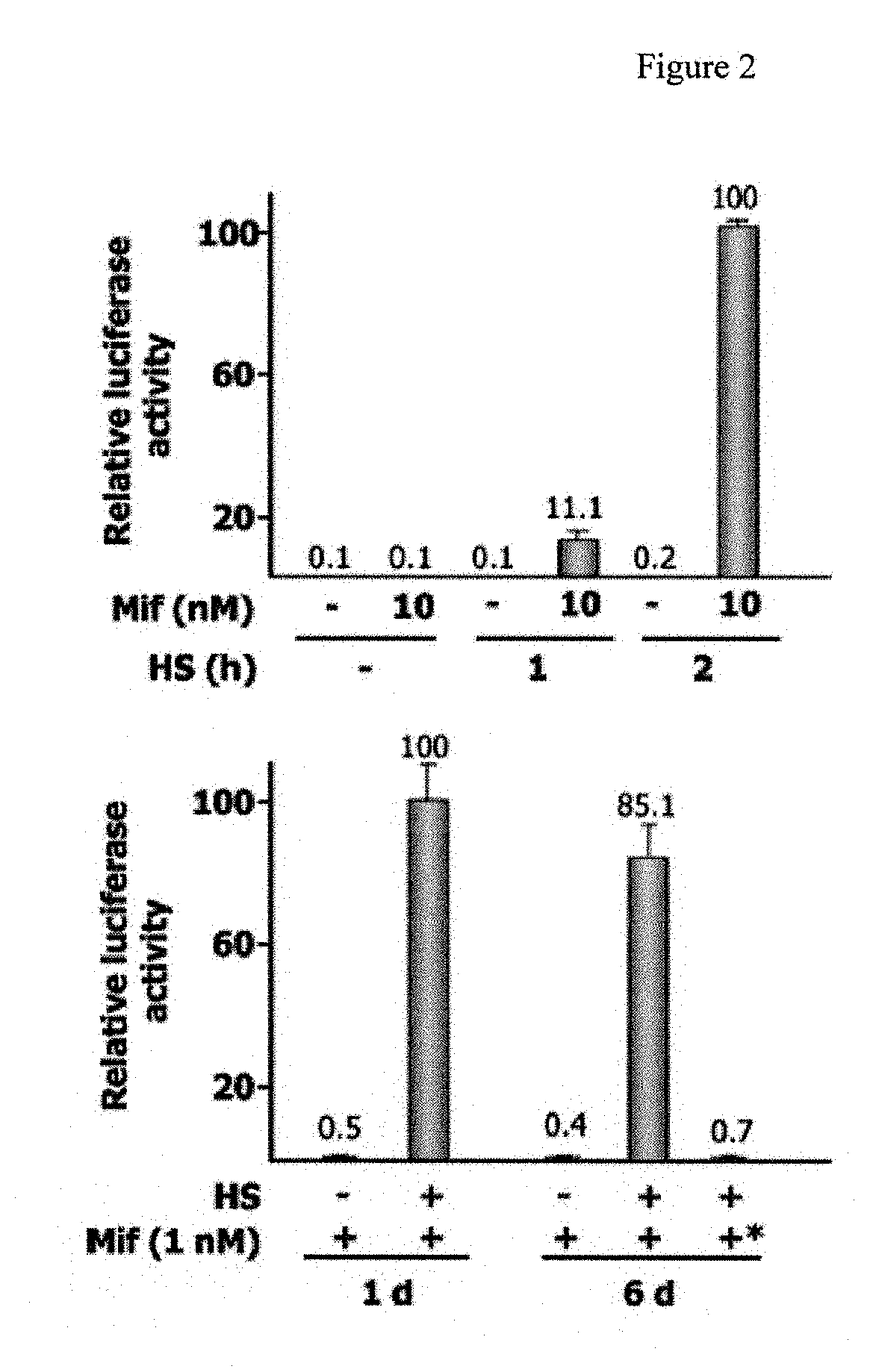Novel immunization agents and methods of use
- Summary
- Abstract
- Description
- Claims
- Application Information
AI Technical Summary
Benefits of technology
Problems solved by technology
Method used
Image
Examples
example 1
ion of Replication-Competent Controlled Viruses
[0128]All vectors were constructed using wild type HSV-1 strain 17syn+ as the backbone. This strain is fully virulent, is well characterized, and the complete genomic sequence is available. The generation of the viral recombinants was performed by homologous recombination of engineered plasmids along with purified virion DNA into rabbit skin cells (RS) by the calcium phosphate precipitation method as previously described. Bloom, D. C. 1998. HSV Vectors for Gene Therapy. Methods Mol. Med. 10: 369-386. All plasmids used to engineer the insertions of the transactivators or the GAL4-responsive promoters for recombination into the HSV-1 genome were cloned from HSV-1 strain 17syn+. Plasmid IN994 was created as follows: an HSV-1 upstream recombination arm was generated by amplification of HSV-1 DNA (17+) (from base pairs 95,441 to 96,090) with DB112 (5′GAG CTC ATC ACC GCA GGC GAG TCT CTT3′) and DB113 (5′GAG CTC GGT CTT CGG GAC TAA TGC CTT3′). ...
example 2
Replication of the Replication-Competent Controlled Viruses
(a) Growth and Replication Properties of HSV-GS1
Plaque Analysis on Permissive (E5) and Non-Permissive (RS) Cells
[0144]Serial dilutions of the purified HSV-GS1 virus were plated onto confluent monolayers of either rabbit skin (RS) or ICP4-complementing Vero-based helper cell line (E5) cells in 60 mm dishes. The virus was allowed to adsorb for 1 hour at 37° C., and then the inoculum was removed, and the cells were overlayed with complete medium (Modified Eagles Medium supplemented with 5% calf serum or 10% fetal bovine serum for RS or E5 cells, respectively). The dishes were then incubated 72 hours and stained with crystal violet to visualize any viral plaques. At dilutions resulting in 10-100 plaques on E5 cells, no plaques were observed on the non-complementing RS cells.
Growth Analysis of HSV-GS1
[0145]Confluent monolayers of either RS or E5 cells in 60 mm dishes were infected as described above with HSV-GS1 at a multiplicity...
example 3
Inability of a Replication-Competent Controlled Virus to Replicate In Vivo in the Absence of Deliberate Activation
[0152]The goal of this experiment was to demonstrate that, in the absence of heat and small-molecule regulator, the GS vectors are as tightly “off” in mice as they appear to be in cell culture. Four to six week old out-bred ND4 Swiss Webster female mice (Harlan Sprague-Dawley, Inc.) were infected with similar amounts of HSV-GS1 or 17syn+ wild type virus on the lightly abraded plantar surface of both rear feet following saline pre-treatment. At 4, 8, and 21 days post infection, 4 mice per time point were euthanized and the feet and dorsal root ganglia (DRG) were harvested, homogenized in TRIzol, and DNA and RNA extracted. DNA was subjected to Taqman Realtime PCR for quantitative analysis for HSV-1 DNA; RNA was analyzed following RT by Taqman Realtime PCR for the presence of ICP4 and glycoprotein C (gC) transcripts as previously described. Kubat, N.J. et al. 2004. The herp...
PUM
| Property | Measurement | Unit |
|---|---|---|
| Concentration | aaaaa | aaaaa |
Abstract
Description
Claims
Application Information
 Login to View More
Login to View More - R&D
- Intellectual Property
- Life Sciences
- Materials
- Tech Scout
- Unparalleled Data Quality
- Higher Quality Content
- 60% Fewer Hallucinations
Browse by: Latest US Patents, China's latest patents, Technical Efficacy Thesaurus, Application Domain, Technology Topic, Popular Technical Reports.
© 2025 PatSnap. All rights reserved.Legal|Privacy policy|Modern Slavery Act Transparency Statement|Sitemap|About US| Contact US: help@patsnap.com



